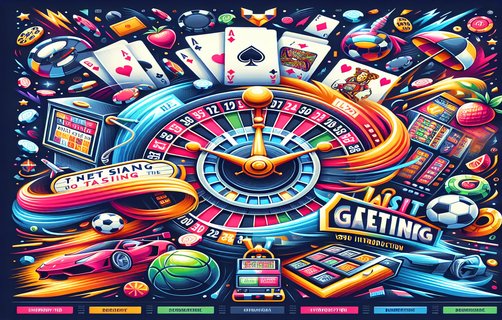The Winning Design of Bingo Slot Machines: An In-Depth Analysis of Strategies and Security Challenges
The world of gambling has taken many forms, but few games have captured players' attention like bingo slot machines. This innovative blend of traditional bingo and modern slot technology offers players an exciting gaming experience. However, the design behind these machines is far from simple. With features like penny slots, progressive jackpots, and referral programs, the thought process of designers plays a critical role in shaping these games. This article dives deep into their design considerations and explores the strategies players employ, alongside the security challenges faced by casinos.

Penny slots are a significant feature of many bingo slot machines, enticing players who prefer low-stakes gambling. By allowing players to wager minimal amounts, these machines lower the barrier for entry and attract a broader audience. Designers strategically implement this feature to ensure continuous engagement, as players can enjoy extended gaming sessions without substantial financial investment. Additionally, penny slots create a social environment; friends can play together while enjoying affordable entertainment. This not only enhances player retention but also promotes the casino as a welcoming space for various demographics.
Progressive jackpots serve as another critical design element that elevates the excitement of bingo slot machines. These jackpots accumulate over time, allowing players the chance to win life-changing sums. Designers engineer these machines to incentivize play through the allure of the progressive jackpot, tapping into the psychology of hope and aspiration. This feature not only enhances the gaming experience but effectively keeps players at the machines longer, increasing the casino's bottom line. An analysis reveals that these jackpots create a frenzy that often results in higher average bets as players dream of the ultimate win.

Some casinos are now actively exploring referral programs to broaden their customer base for bingo slot machines. Designers incorporate these strategies into the gaming ecosystem by providing bonuses or incentives to players who introduce new patrons. This approach not only stimulates player numbers but also fosters a community spirit around bingo slots, as regular players become advocates for their favorite machines. The referral programs can create a cycle of engagement, further solidifying the patrons' bond with the game and the venue.
However, with increased participation comes a need for robust casino security measures. There have been instances of security breaches in casinos that have exploited loopholes within slot machine designs. Designers must, therefore, collaborate closely with security teams to anticipate potential vulnerabilities. This relationship ensures that advanced encryption methods and surveillance technologies are integrated during the design phase, safeguarding both players and casino revenue.
When analyzing player strategies such as fold equity and the hit-and-run strategy, it becomes evident that seasoned players often employ calculated decisions to maximize their chances. The fold equity strategy involves determining when to stay in the game based on potential returns against probable wins. Players must assess each game and adapt their approach, a dynamic that is continuously influenced by the machine's design and payout frequency.
On the other hand, the hit-and-run strategy aims at playing briefly and cashing out once a win is achieved. Designers of bingo slot machines need to understand these tactics carefully, ensuring that game mechanics are tailored to provide excitement while mitigating losses for themselves and creating a better experience for players. Ultimately, the intersection of design and player strategy composes a complex narrative that underlines the operational success of bingo slot machines.
In conclusion, the intricate design of bingo slot machines goes beyond the basic mechanics of spinning reels and electronic displays. A detailed examination of penny slots, progressive jackpots, referral programs, player strategies, and security concerns reveals a multi-dimensional gaming environment. As designers continue to innovate, addressing not just player experience but also security challenges will remain crucial in sustaining the allure and profitability of these popular gaming machines.
